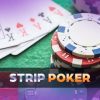Understanding how to read betting odds is one of the most crucial aspects of betting on sports, and doing so will allow you to increase the amount of money you take home from your wagers.
A wager can only be placed if there are two opposing parties, one of which predicts that a certain event will take place and the other of which does not. The point spread is nothing more than a number that indicates how likely or unlikely it is that something will occur. If you believe that something will occur, you should place a bet on it. If you do not believe that something will occur, you should place a bet against it.
Examining the odds that are offered by both sides of the bet is the quickest and easiest approach to decipher what the line actually signifies. The odds indicate the amount of money you could win if your team is victorious (or loses). Because chances are always positive numbers, when someone says they have +180 odds on their team winning, they are indicating that they have $180 riding on their team winning. This is because odds are always positive numbers.
There is an additional figure next to the odds for each side that is called the “moneyline.” This is the amount of money that is at stake in your wager; to put it another way, this is the amount of money that could be won if either team came out on top. For instance, if Team A had odds of -150 on the moneyline and Team B had odds of +130 on the moneyline.
American Odds
The American odds, at first glance, can be a little bit perplexing. They are not as easy to understand as odds expressed in decimal or fractional form. The starting point for American odds is $100, but the way in which they relate to this figure shifts depending on whether the wager is favored or not. When it comes to bets that are favorites, the odds will begin with a negative number and will inform you how much money you have to wager in order to win $100. If the odds are -110, which is a usual amount for a bet that involves a spread, then you will need to place a wager of $110 in order to win $100. If the chances are against you and you want to win $100, you will need to place a bet of $200. Bets do not need to be that size, but the proportion will remain the same regardless of the size of the bet. You would win $5 in addition to your original bet of $10 if you placed a $10 wager with odds of -200.
Bets for the underdog have odds that begin with a plus sign. The plus odds indicate how much profit you will make off of a wager of one hundred dollars. If the odds are +200, you will win $200 in addition to your initial wager of $100 if you place a $100 bet. If you wagered $20, you would come out ahead by $40.
When it comes to the extremely unlikely even money chances, those can be listed as either EV, -100, or +100.
Let’s have a look at how this operates in a game that’s actually being played.


If you bet against the spread, you will receive a return of -110 for either the Celtics or the Lakers. The same is true for both interpretations of the total (going over or under). The difference can be found in the moneyline. A moneyline wager of $250 placed on the Celtics would result in a payout of $100 (in addition to the return of the original stake of $250) in the event that the game was won by either team, regardless of the margin of victory. If you bet $25, you would win $10.
Since the Lakers are the underdog, their prospects of winning are increased. A wager of $100 would result in a gain of $280 in addition to the original wager of $100.
Fractional Odds
Although decimal and fractional odds are more frequent in sportsbooks located outside of the United States of America, certain American sportsbooks do offer them as well. Both operate on the same fundamentals.
Odds that are expressed as fractions, such as 3-1 or 7-4, are called fractional odds. The name of these odds gives away their format. To calculate the amount of profit, multiply the amount of the bet by the fraction. If you place a bet of $10 with odds of 3-1, you will win $30 plus your original wager of $10.
A wager of $10 at odds of 7-4 would result in a return of $17.50 in addition to the initial wager of $10. First, multiply the sum of ten dollars by the numerator, which in this instance is seven, and then divide that result by the denominator, which is four. You get 17.50 if you split 70 by four in this manner.
The denominator of popular bets, such as 1-2 or 2-5, will be greater than the numerator. Similar to the instances presented earlier, the numerator of underdog bets will be larger than the denominator of the wager.
The most common application of fractional odds in the United States is seen in betting on futures, where practically all of the odds have a denominator of 1, making them simpler to comprehend.


Decimal Odds
Decimal odds are displayed as a single number, which represents the amount that a winning bet of one dollar would bring in. If the odds are 6, then a successful bet would result in a profit of $5 in addition to the return of the initial bet of $1. A bet on any number between 1 and 2 is a popular option, and a bet on 2 pays even money.
When the fractions employed in fractional odds start to look a little messy, these are the types of odds that are typically utilized in countries other than the United States. As an illustration, it is not uncommon to come across American odds of -115, which, when converted to fractional odds, equals 20-23. Quick, apply the arithmetic to get the return on a $10 bet given the odds of 20-23. Ew. The decimal odds would be given as 1.87, which would make the mathematics associated with this $10 bet a great deal simpler. When you multiply the odds by the bet, you will have the return, which will include the amount that was initially staked. It’s a lot simpler, isn’t it? The total amount returned would be $18.70. In this particular scenario, using decimal odds could end up being more beneficial.
Converting Odds
No matter how they are presented, the ability to transform your chances into a percentage that represents breaking even is an essential component of comprehending what constitutes an optimal wager. If the book is giving you the odds that the bet will come in one-third of the time and the odds are +200, then implies the book is giving you the odds that the bet will come in one-third of the time. If you believe the likelihood to be higher than that, then placing a bet on it is a smart move. This is analogous to the pot odds that are used in games like poker.
Imagine you are flipping a coin. You are aware that there is a chance of heads showing up one time out of every two. It is a decent wager if the odds that are presented to you are better than one in two. Because athletic events aren’t as predictable as other types of events, you won’t be able to know the precise odds very often. However, this is an important aspect to bear in mind while evaluating a bet, particularly on a moneyline.
If you have a projection model, such as the Slingshot model for forecasting upsets in the NCAA men’s basketball tournament, you can apply this approach to increase your accuracy. The chance of an upset occurring is quantified by Slingshot as a percentage. After converting the odds into a percentage, you may do a comparison between that % and the moneyline odds. If the model determines that the chances are much better than what the bet is offering and you have faith in the model’s predictions, then this might be a helpful tool in determining whether or not you should place a bet.





